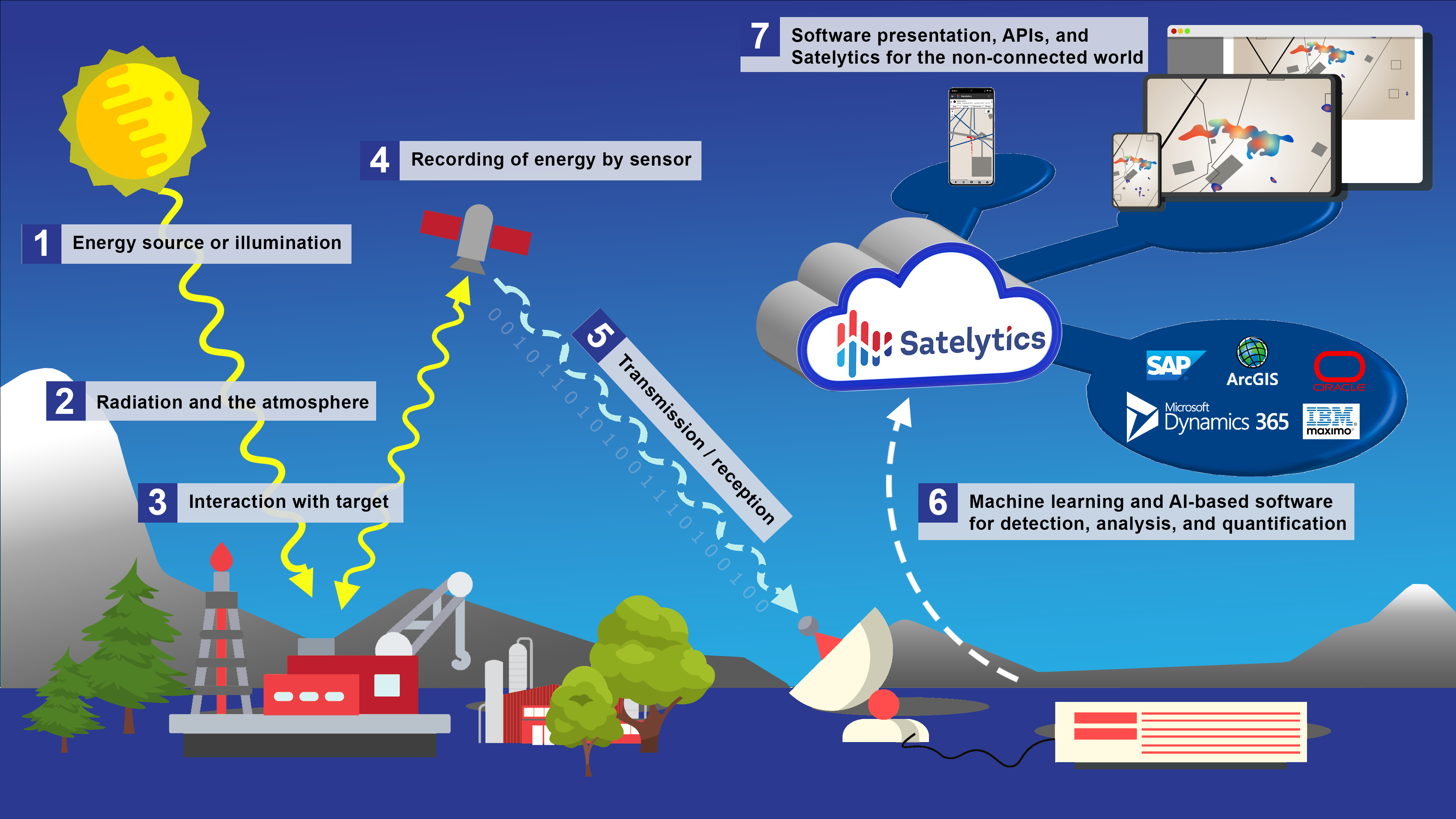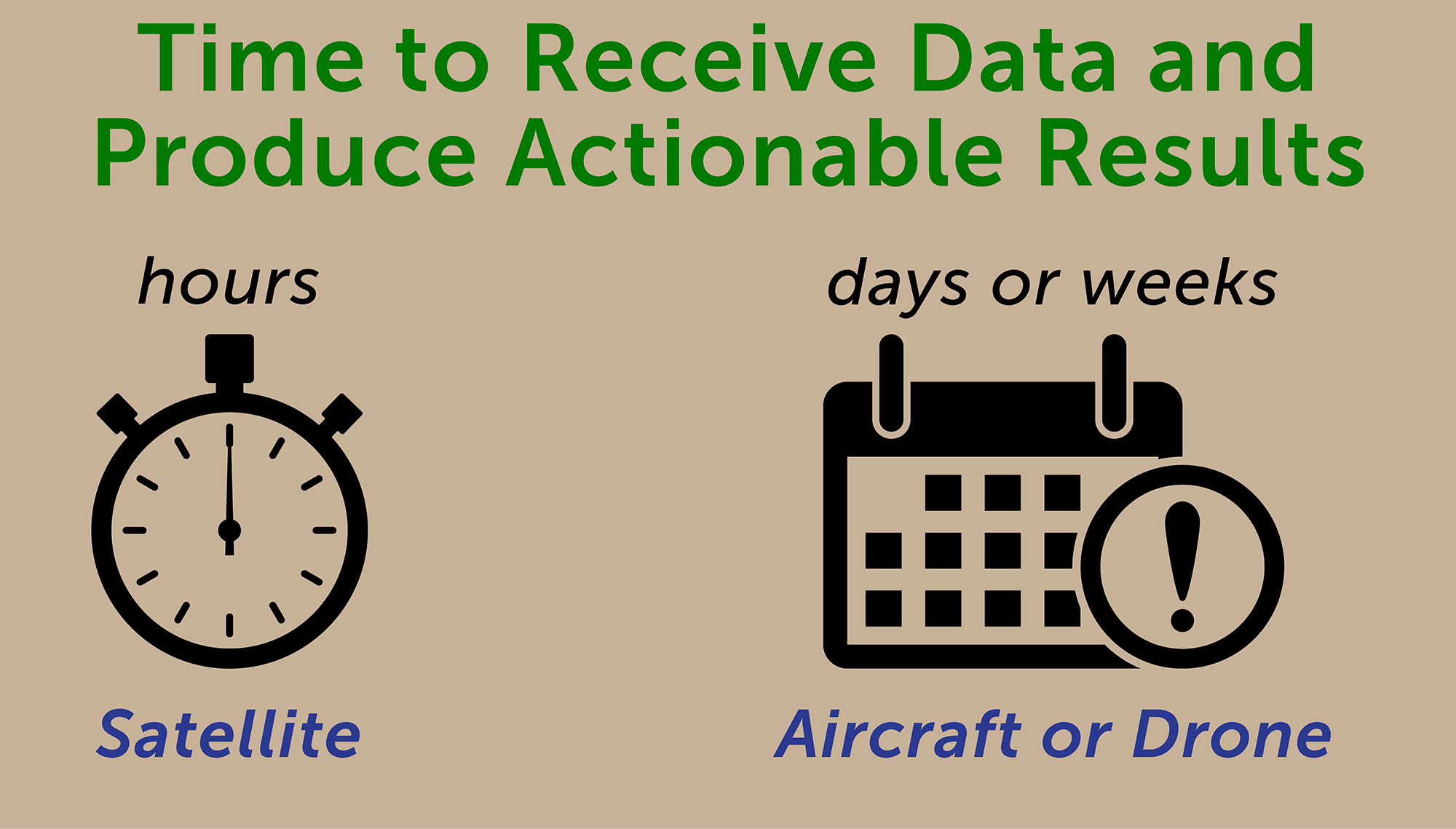
• General

• General
Being data agnostic, we can work with any data-collecting platform: drones, UAVs, stratospheric balloons, etc. All have their purposes, but we find satellites to be the best option in most cases for our clients.

Data Capture
A drone can capture a few square miles per day. A fixed-wing aircraft can capture a few hundred square miles per day. But a satellite can capture thousands of square miles in a matter of minutes. Satellites can revisit any area of interest 4-5 times per week. In a few years, experts predict this will increase to multiple times per day as more satellites are constantly put into orbit.
Tasking satellites frees up employees and resources to be used elsewhere. Not only that, but they remove human error and danger from the equation, unlike aerial flyovers and employing grounds crews.
Data Transfer Speed
Once data capture happens, the data needs to be transferred and analyzed quickly to have any value. High-resolution data results in more pixels and larger data sets, but also clearer and more accurate information. It takes time to move large data sets to the cloud for processing, but satellites have overcome this by streaming the data constantly via a vast network of downlink stations connected to the cloud, enabling the transfer of terabytes of data within minutes.
Conversely, drones and fixed-wing aircraft platforms often require the physical transfer of a hard drive, then the intermediate transfer of the data off that hard drive, before uploading the data to the cloud once the hard drive finally arrives at a location with suitable internet infrastructure.
Analyzing Data
After transfer of data (often involving physical transfer of a data storage mechanism), the imagery from sources like drones and other aircraft still needs to be analyzed by engineers. In total, it can take upwards of months before the results of the data captured can spark action! Of what use is the data that long after an event?
Meanwhile, our algorithms analyze the collected data in the cloud where it resides, then produce actionable results and deliver those results to responders in the field within hours of data capture.

Our purpose is to provide our clients with accurate, actionable alerts. We want you to have all the data you need to prevent and remediate accidents and meet your goals and regulations.